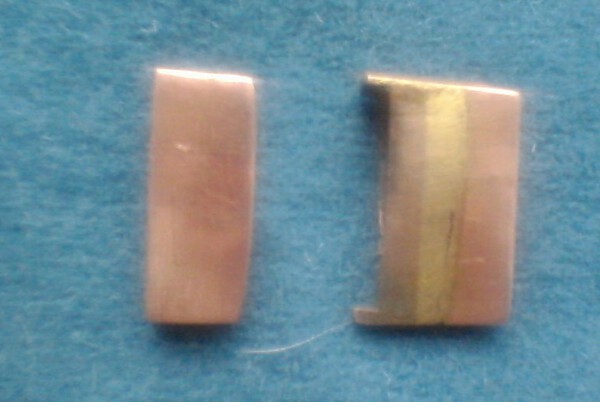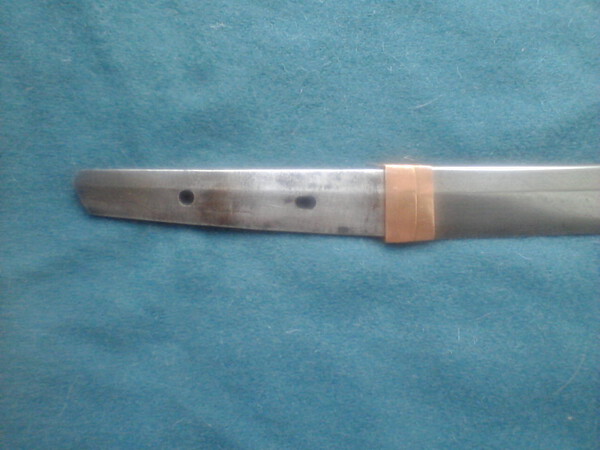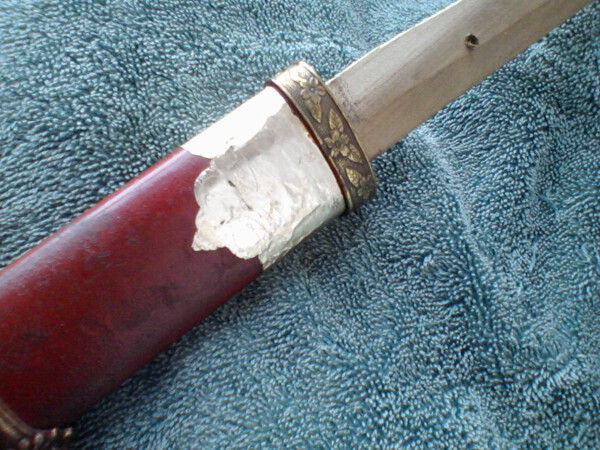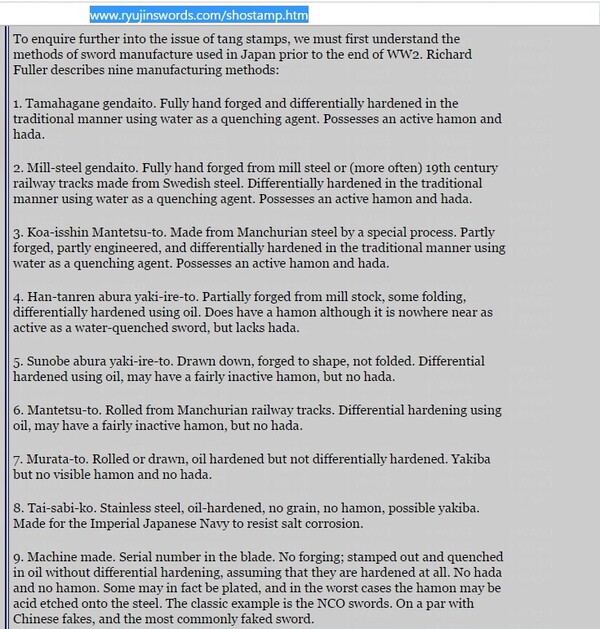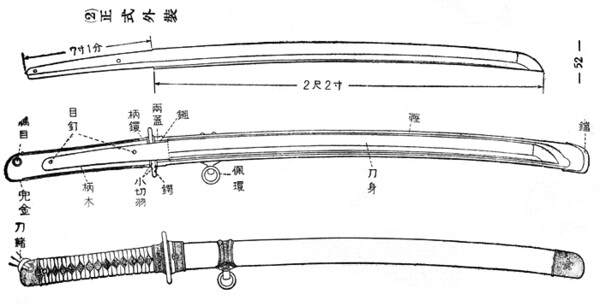-
Posts
1,690 -
Joined
-
Last visited
-
Days Won
11
Content Type
Profiles
Forums
Events
Store
Downloads
Gallery
Everything posted by Dave R
-

Lost Packages 1X Menuki One Fuchi
Dave R replied to vajo's topic in General Nihonto Related Discussion
I have had a similar experience, but with a kimono. In the end it all worked out Ok. -
This is one of the cases where I would suggest using Uchiko. It is very mildly abrasive, and would help to remove the rust, and you would only be doing just what it's original owners would have done. I would say, get a decent quality one though, Namikawa Hebei sell the powder quite cheaply and I doubt you could get better quality. They also use Paypal and have an easy to use website for ordering. http://www.namikawa-ltd.com/product-list?keyword=uchiko&Submit=Search
-
I remember a Japanese collector saying that the ideal was to have the blade in shirasaya, and the mounts on a tsunagi both on the same rack.
-

Possible Re Heated/forge O-Suriage? 13 Inch Wakazashi
Dave R replied to Blazeaglory's topic in Nihonto
Just read the books I suggested! And if we were to compare like with like, as in 6th to 11th century Saxon and Viking swords compared to the same dated Nihonto, I think you would have a revelation. -

Possible Re Heated/forge O-Suriage? 13 Inch Wakazashi
Dave R replied to Blazeaglory's topic in Nihonto
And this one... https://boydellandbrewer.com/records-of-the-medieval-sword-pb.html -

Possible Re Heated/forge O-Suriage? 13 Inch Wakazashi
Dave R replied to Blazeaglory's topic in Nihonto
Cough, cough, so why bury swords with warriors and kings? To keep the place tidy? Why have a God of smithing? I suggest you read this as a start..... https://boydellandbrewer.com/the-sword-in-anglo-saxon-england-pb.html -

Possible Re Heated/forge O-Suriage? 13 Inch Wakazashi
Dave R replied to Blazeaglory's topic in Nihonto
Only tools! After the 14th century perhaps, prior to that they were items of honour and pride, often named and handed down through generations. In Saxon and Viking culture they were regarded as having personalities and preferences. You need to broaden your horizons methinks! -
Possibly for the "dress" version" of the Gunto, rather than the combat one. Sometimes referred to as being piquet weight swords. An interesting thread linked below. http://www.warrelics.eu/forum/Japanese-militaria/light-weight-shingunto-686745/
-
The boarding of the "Altmark" happened in February 1940..... And boarding actions continue to this day. It depends on whether you want to sink, inspect or capture the opposing ship. https://en.wikipedia.org/wiki/Altmark_Incident
-
Yup, which is why I think I got it at the price I did. The Habaki had been scrubbed and varnished as well, when I got the varnish off (acetone) I found the remains of gilding where the lower piece had covered the upper. Sorry for the poo® quality of the photo's, I was using my phone as the camera is not playing.
-
Genuinely looks to be Ubu, as in not having the square cut Nakago Jiri (Kiri Jiri) usualy seen on suriage blades. As for financial sense, does collecting Nihonto ever makes financial sense.
-
I play safe and use this one, ever since I saw a Japanese Nihonto dealers video of sword care, where this featured. Personal choice, and I have no complaints, but people have commented on the excellent, even and consistent coverage. https://www.fine-tools.com/pflege.html
-
As said, sadly scrubbed, probably with wire wool or even buffed, and so little or nothing to be seen. There are a few ware but otherwise bland. I have tried giving it a good go over with Uchiko, but I think the buffing has prevented that from being effective. What I would really like to find out, is why it has two mekugi-ana. I know that some Katana have this feature, surprised to see it on a Wakizashi.
-
New to me and bought at the weekend. A very robust blade and spec's on the photo's. What intrigues me on this heavy blade, 7 mill. thick at the mune base and weighing 600 grms, is that it has two mekugi-ana, but looks to be Ubu. Sadly scrubbed at some point, including the nakago.. A more knowledgeable friend hazarded a guess as it being Mino and dating to the 1720's. Thoughts please.
-
-
Generaly speaking I am all in favour of "project swords", but this one has me unhappy. Chopped nakago (why) and what looks like an "enhanced" blade. I would like a look at the kisaki on this one as well, and in addition the 'machi look a bit worn. I fear that this one might be a section of a blade, rather than a legitimate suriage.I could be wrong, I often am... but unless this is going for peanuts I would walk away.
-

Another Sword Asking For Help Please
Dave R replied to bwanapete's topic in Military Swords of Japan
I do not like the fuchi-kabutogane, the stippling is a bit random,... and of course there was loads of variation in the wartime fittings. Blade and habaki look ok, but I am worried that the hamon has been "enhanced". Not a $5000 sword. -
I would say it is a legitimate Shin-Gunto, and an "old blade". As always, price is a factor when looking to buy, and condition matters. A lot of the older blades are not family pieces, but bought in to refit for the war effort. http://www.warrelics.eu/forum/Japanese-militaria/family-short-blades-gunto-688110/
-
I think the tsuba has been flipped over, because it has had to match up to different fittings and the original piercing could not be conveniently altered, going from a side clip (chuso) at a 3 o clock position to a 2 o clock position. This could have happened during the original use of the piece in wartime.......
-
Hiya, the bit you really want to see, is that it looks in every respect to be a decent late war Shin-Gunto... as opposed to a Chinese fake.
-
What type of blade did this come off? I have two thoughts on this, one is that mass produced blades like shin-gunto might have something like this as part of the production tracking system. The other is that the original metal sheet might have a production mark, and it just happened to carry on over to the finished item.
-
They do turn up on Ebay.
-
Real indeed, but not a Nihonto. It looks like it has a Seki stamp and so non traditional in some form.The list below is now a bit outdated, but still ok as a basic guide.
-
It looks as though it had a metal saya, which would reinforce that idea. The article mentions removing "the covering", I wonder it was one of those with a leather covered tsuka.
-
Not an NCO blade, but a "Rinji Seishiki" also known as a Type 3. Blades in these could be Nihonto or Showato.



